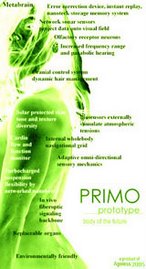The uniqueness and functionality of ‘new’ media is best understood in the examination of the characteristics of Digital Journalism:
- Hypertextuality:
The ability to set up pathways (or links) from one text to another; this may be in the form of an RSS feed.
- Interactivity:
This pertains to the active engagement of human (or machine) interaction, for instance, commenting on a news story.
- Nonlinearity:
There is no traditional ordering of time and space; this means you may choose to search for the weather forecast first, before engaging with the hard news stories of the day.
- Multimedia:
The merging of various media forms; telling the story from different platforms.
Therefore, apart from written text, a news bulletin may also consist of video footage, streaming audio, photographs, and other graphical representations (such as infographs and comic strips).
- Convergence:
The merging of technological services, for instance, an iPod receives and stores songs, videos, photographs, and other forms of data.
- Customization and personalization:
The option of having only those services and content that interest you, sent to you.
This may be in the form of links on your page, which select and filter what you wish to engage with.
- Digitality:
The ability to create content, digitize, duplicate, manipulate and transfer it.
(Kevin Kawamoto 2003: 4)
- Virtuality:
The use of pseudo-realistic programs such as 3-dimension. These provide you with virtual environments and richer media experiences.
(Martin Lister 2002: 13)
Media theorists, Jay David Bolter and Richard Grusin argue that no medium is ever in its entirety new, but merely a re-fashion of preceding media.
Bolter and Grusin “refer to this process as the reciprocal logic of remediation- the repurposing or re-fashioning of old media with new media, not just in terms of content or retelling of stories but through the incorporation of old media into new media forms” (Erik Bucy 2005: 50).
According to the remediation theory, there is no such thing as new media, just the repurposing of already existing media. However, the process is reciprocal. This means that new media forms would fashion themselves on old media forms, so as not to alienate existing media markets. In response, old media forms would re-fashion themselves on new media forms, in order to attract new media markets (Bucy 2005).
“New media have not historically obliterated their past… [and old] media forms change when newer forms appear and there is a different accommodation of a media mix” (David P. Marshall 2004: 4).
Once the new medium has established itself amongst its users, it will have to develop its own characteristics and content specific to its platform. Most of our media is currently undergoing this process of remediation. The bloggers’ sphere is such a medium.
Blogs range from personal online diaries to critical commentary on particular subjects. However, blogs are rapidly becoming popular media for Citizen Journalism. Ordinary people function as journalists, reporting on stories within their proximity, and post the news onto their blogs. However, traditional media practitioners have questioned the legality of calling such bloggers, journalists.
“Who qualifies for press credentials? Who (or what) is the press in the twenty-first century? Should all Web sites that claim to post “news” be designated as news organizations?” (Kawamoto 2003: 2). This brings us to the above-mentioned concept of digital journalism.
Kawamoto tentatively defines digital journalism as “the use of digital technologies to research, produce, and deliver (or make accessible) news and information to an increasingly computer-literate audience” (2003: 4).
Additional to the above quoted media studies’ critiques; there is critical debate of whether there are renewed cultural struggles, shifts and raptures in identity as the result of new media (Marshall 2004: 2).
“[T]he emergence of ‘new media’ as some kind of epoch-making phenomena, is seen as part of a much larger landscape of social, technological and cultural change; in short, as part of a new technoculture” (Lister el al. 2002: 11).
As a result, Marshall suggests the “cultural production thesis” be used in the analysis of new media (2004: 10-11). Under this thesis, the audience is understood in terms of users who engage with the media and not passive consumers.
References:
Bucy Erik (ed). 2005. Remediation in Living in the Information age: A New Media Reader.
Belmont, Calif.: Wadsworth Thomson Learning
Kawamoto, Kevin. 2003. Digital journalism: emerging media and the changing horizons of journalism in Digital journalism: emerging media and the changing horizons of journalism.
Lanham, Md.: Rowman & Littlefield
Lister, Martin [et al.]. 2002. New Media and Technologies in New media: a critical introduction.
London: Routledge
Marshall, David P. 2004. Introduction: new media and cultural studies in New Media Cultures.
London: Arnold; New York: Distributed in the US by Oxford University Press
Subscribe to:
Post Comments (Atom)

No comments:
Post a Comment